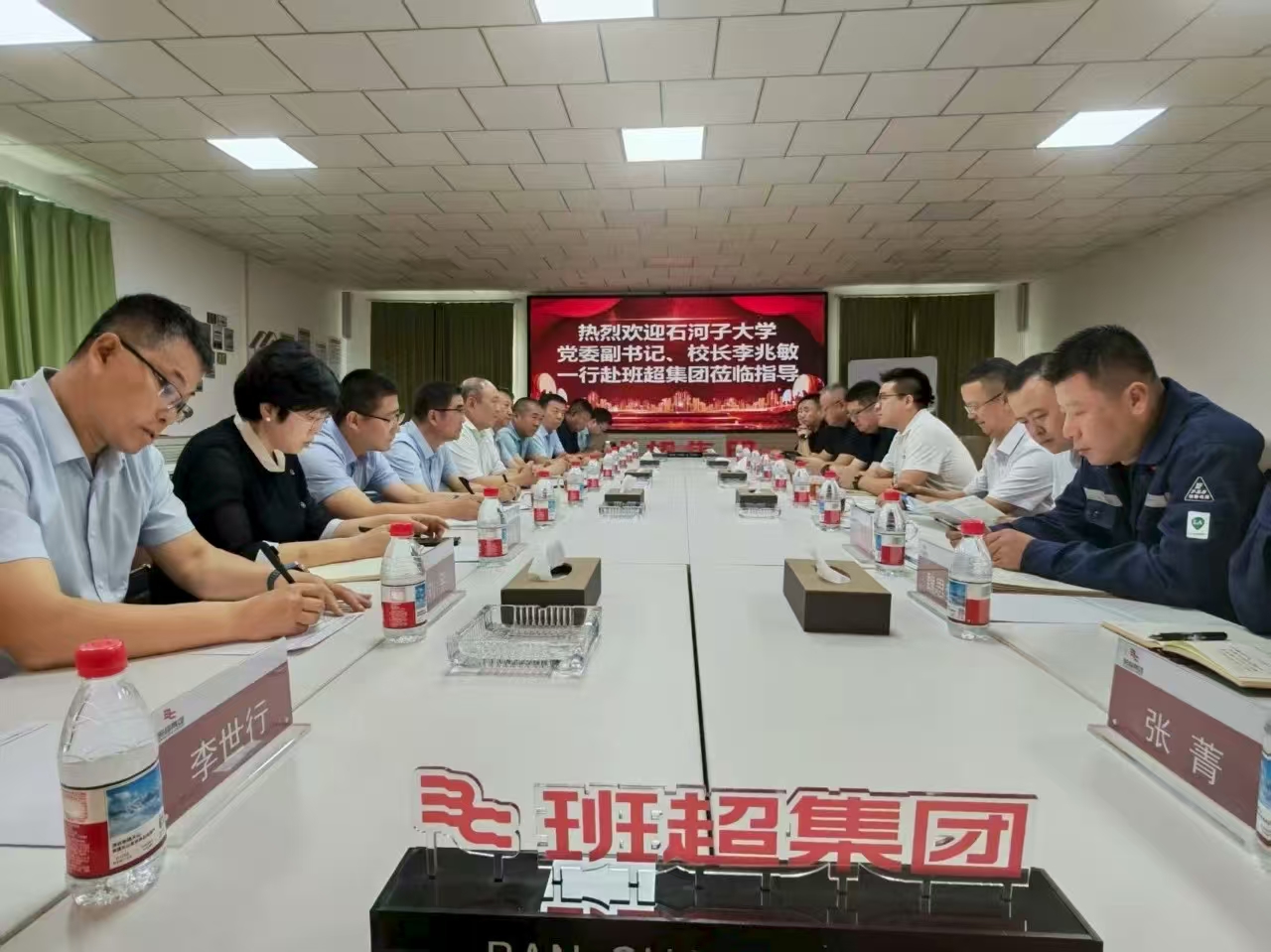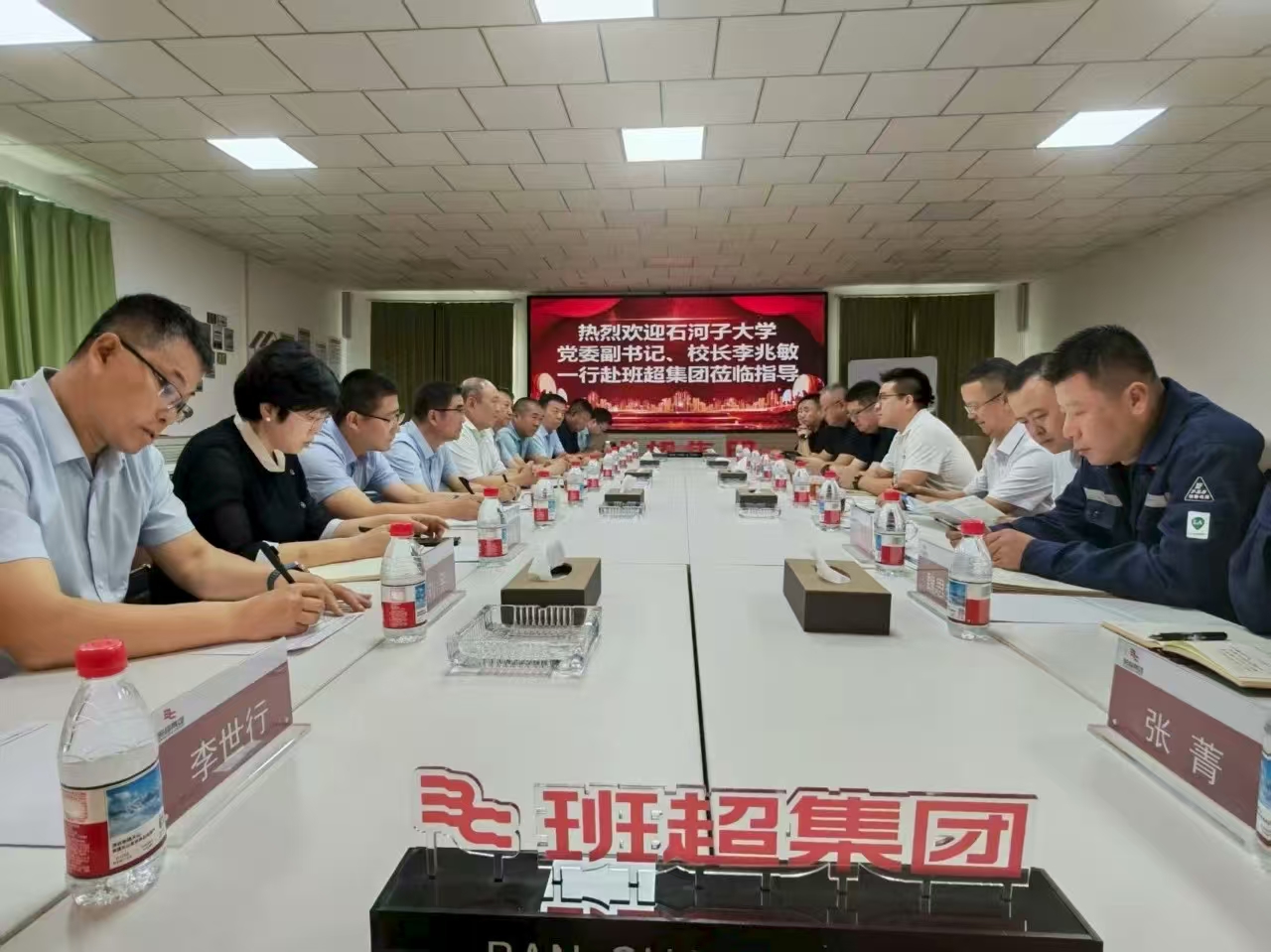7月8日下午,由石河子大学党委副书记、校长李兆敏带队的考察团到班超集团进行调研并召开座谈会。双方聚焦企业发展现状、产业潜力及产学研合作等议题深入交流。班超集团副总裁刘古锋主持会议并就相关情况进行详细介绍。
会上,班超集团副总裁刘古锋全面介绍了集团的发展情况,重点阐述了在当前经济形势下,有色金属产业的广阔潜力,尤其是镁作为轻质高性能金属材料在新能源、航空航天等领域的发展前景。在谈及发展挑战时,他坦言,虽然集团已与多所高校、科研机构建立稳定的产学研合作关系,通过协同创新突破了技术瓶颈。但是企业发展仍需要懂技术、懂生产的复合型工程师,和能够引领行业前沿的高端研发人才,期待通过与石河子大学合作破解人才短板难题。
李兆敏校长对班超集团在镁冶炼领域的专注深耕及技术创新成果给予了高度肯定。他表示,石河子大学在相关学科领域积淀深厚,此次调研正是为了精准对接企业需求。未来可在技术联合攻关、定向人才培养、实习实训基地建设等方面与班超集团开展深度合作,推动科研成果转化落地,实现科研成果与产业需求的无缝衔接。
双方还就具体合作方向进行了初步探讨,一致认为产学研协同是激活产业潜力、破解发展难题的关键路径。此次座谈为双方搭建了高效沟通的桥梁,下一步将围绕技术研发、人才输送等具体事项细化合作方案,实现高校科研优势与企业产业优势的精准对接,共同为有色金属产业高质量发展注入新动能。

On the afternoon of 8 July, a delegation led by Li Zhaomin, CPC Deputy Secretary and President of Shihezi University, visited Ban Chao Group for an on-site investigation and held a symposium. The two sides engaged in in-depth exchanges on the Group’s development status, industrial potential and university-industry-research collaboration. Liu Gufeng, Vice President of Ban Chao Group, chaired the meeting and presented a comprehensive briefing.
Vice President Liu Gufeng provided an overview of the Group’s growth trajectory, emphasizing the vast potential of the non-ferrous-metals sector amid the current economic climate. He highlighted magnesium—a lightweight, high-performance metal—as particularly promising for new-energy and aerospace applications. While acknowledging that Ban Chao has already established stable industry-university-research partnerships with several universities and research institutes, and has overcome technical bottlenecks through collaborative innovation, Liu frankly noted that the company still faces a shortage of engineers who are conversant with both technology and production, as well as high-end R&D talent capable of leading frontier research. He expressed hope that cooperation with Shihezi University will help solve this talent-gap challenge.
President Li Zhaomin commended Ban Chao Group’s dedication to magnesium smelting and its technological achievements. He stated that Shihezi University possesses strong disciplinary foundations in relevant fields, and that the visit was precisely aimed at aligning university capabilities with corporate needs. Going forward, the two sides can deepen collaboration in joint technology development, targeted talent cultivation and the establishment of internship and training bases, so as to accelerate the translation of research results into industrial applications and achieve seamless integration between scientific achievements and market demand.
The two parties also held preliminary discussions on specific cooperation directions, sharing the view that synergistic industry-university-research collaboration is the key to unlocking industrial potential and overcoming development challenges. The symposium built an efficient communication bridge between the university and the enterprise. Next steps will focus on refining cooperation schemes in areas such as technology R&D and talent supply, ensuring precise pairing of the university’s research strengths with the Group’s industrial advantages, and injecting new momentum into the high-quality development of the non-ferrous-metals industry.





 兵公网安备66130002000118号
兵公网安备66130002000118号